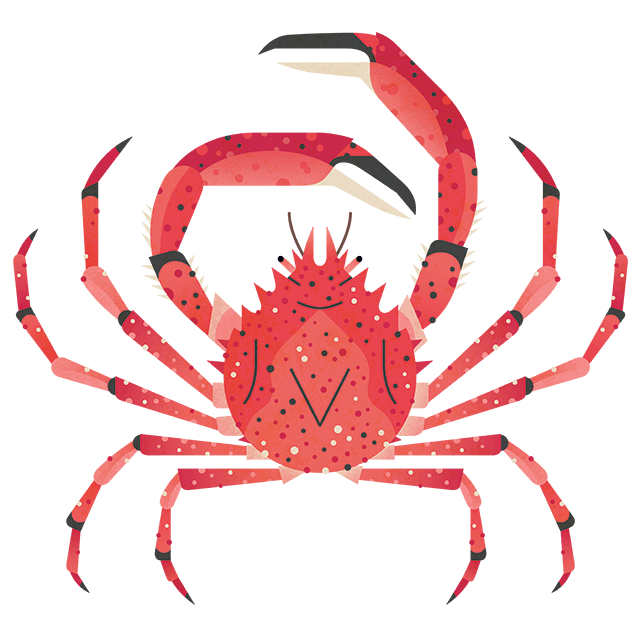
How to identify types of jellyfish in the UK
Jellyfish occur throughout UK seas, with large blooms of most species appearing in the spring and lasting through to autumn. Here are some top tips and identifying features to help you decide which species you've spotted.
Learning more about jellyfish
Jellyfish are important for marine ecosystems.
They play a huge role in lots of marine food chains and provide habitats for smaller species which shelter under jellyfish bells, protected from predators by their tentacles.
Jellyfish are also a great indicator of change in our ocean, so tracking their numbers each year can help us to spot changes in climate, fishing activity or ecosystems.
Types of UK jellyfish you could discover
Thousands of citizen scientists, like you, have shared sightings of jellyfish from around the UK, helping to build a huge data set of six jellyfish and two jellyfish-like hydrozoan species.
Hydrozoans can be either solitary individual animals or, like the two species we're recording, can live in colonies. In colonies, groups of microscopic individuals live and work together, each with a different role to play including feeding, reproducing and protecting.
Here are some top tips and identifying features to help you decide which species you've spotted. You can also download our Jellyfish ID Guide.

This image labels the parts of a jellyfish. Starting from the top down: Bell, Muscle band, Mouth, Oral arms, Gonads, Tentacles
Barrel jellyfish
(Rhizostoma pulmo)
Barrel jellyfish grow up to 1m in diameter. They have a spherical, solid rubbery bell, which can be white, pale pink, blue or yellow and is fringed with purple markings.
They don't have tentacles, but eight thick, frilled arms hang from the manubrium (found in the underside centre of the bell, with the mouth and arms at its tip).
Careful! They have a mild sting.

Blue jellyfish
(Cyanea lamarckii)
Blue jellyfish grow up to 30cm. They're a similar shape to the lion's mane jellyfish but are smaller and have a blue bell through which radial lines can be seen. Confusingly, a yellow colour variant also occurs in UK waters.
Careful! They have a mild sting.

By-the-wind-sailor
(Velella velella)
This isn't a jellyfish, but a floating colony of hydrozoans.
By-the-wind-sailors grow up to 10cm long and are blue-purple in colour. They have an upright sail with a mass of small tentacles surrounding the mouth on the underside.
Look out! They occur in vast swarms.

Compass jellyfish
(Chrysaora hysoscella)
Compass jellyfish typically grow up to 30cm. The colour varies, but they usually have a pale umbrella-shaped bell with brownish V-shaped markings.
They have 24 long, thin tentacles and four long, thick, frilled arms hang from the manubrium.
Careful! This jellyfish stings.

Lion's mane jellyfish
(Cyanea capillata)
Lion's mane are large - they're usually 50cm, but can reach 2m in diameter. They have a large reddish brown, umbrella-shaped bell with a mass of long, thin hair-like tentacles as well as short, thick, frilled and folded arms.
Be very careful! This jellyfish stings.

Mauve stinger jellyfish
(Pelagica noctiluca)
Mauve stingers are relatively small, growing up to just 10cm. They have a deep bell with pink or mauve warts and eight hair-like tentacles. The manubrium has four longer frilled arms with tiny pink spots.
Be very careful! This jellyfish stings.

Moon jellyfish
(Aurelia aurita)
Moon jellyfish grow up to 40cm in diameter. They have a transparent, umbrella-shaped bell edged with short hair-like tentacles.
They're often recognised by the four distinct pale purple gonad rings in the bell. The manubrium has four short, frilled arms.
Careful! It has a mild sting.

Portuguese man o' war
(Physalia physalis)
This isn't a jellyfish, but a floating colony of hydrozoans.
The Portuguese man o' war has a distinctive transparent, gas filled float with a crest. They're blue-purple in colour, with many hanging ‘fishing polyps’ below that may be tens of metres long.
These are extremely dangerous to humans due to their powerful sting. They rarely occur in the UK but should be reported to the local authorities if found in large numbers.
Be very careful! This animal stings.

How well do you know your jellyfish?
Put your jellyfish ID skills to the test and learn some fun facts along the way.
Staying safe and respecting our marine wildlife
Spend enough time at the coast and you are bound to come across jellyfish. While these awesome animals might send some people running for the hills, there's no need to panic. Of the species found in UK waters, most of them are harmless to humans.
One or two species do have a painful sting though, so we'd urge you to avoid touching them – even if they are washed up on the beach.
What to do if you get stung by a jellyfish
If you do get stung, while swimming in the ocean or walking on the beach (even a dead jellyfish can sting), here's what you should do:
- Don't panic: remember that most jellyfish stings are not emergencies.
- Get out of the water as soon as possible.
- Tell a lifeguard if there is one on duty, so they can warn other bathers.
- Follow the NHS guidance on treating a jellyfish sting.

This project is funded by the Government's Green Recovery Challenge Fund. The fund was developed by Defra and its Arm's-Length Bodies. It is being delivered by The National Lottery Heritage Fund in partnership with Natural England, the Environment Agency and Forestry Commission.


